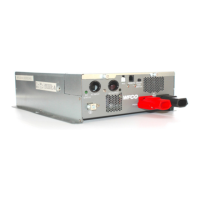INVERTER GROUND CONNECTION
Pass-through Ac Ground Bonding
For a safe installation, both the input and output ac grounds must be properly connected to
the inverter along with the line and neutral. When the inverter is bypassed (not inverting), this
ground wire connection is passed through to the output circuit and the load either directly or
via the distribution panel.
This preserves the single neutral-ground bond at the service panel, as the NEC requires.
These ground wires are usually sheathed with the line and neutral. This ground is critical – it
allows the circuit breaker to prevent grounded metal items from being energized in case of a
short circuit.
Inverter Safety Ground
When inverting, as the NEC also requires, the pass-through ground connection is opened,
and the inverter output neutral is connected to the local safety ground instead. This happens
automatically in the inverter, as long as the local ground connection is correctly wired.
A separate terminal is provided on the inverter for this safety ground. The code for RV
applications requires 8 AWG or larger wire to be used for this ground connection. This con-
nects the inverter ground terminal to the vehicle or trailer chassis. Be sure to remove any
paint or corrosion from the chassis to ensure a positive connection to the metal with a tooth
washer, a ring lug, and a bolt. See Figure 15.
Neutral Grounding Connection Setting
A ground screw on the side of the unit allows, for some special non-RV applications,
disconnecting the neutral-ground connection while inverting. See Figure 18.
The default setting is option A: YES - CONNECTION BETWEEN NEUTRAL CONDUCTOR OF
THE AC OUTPUT AND SAFETY GROUND. For RV applications, be sure this screw is tightly
secured in the correct position.
21
Figure 15. Inverter ground is connected to chassis with 8 AWG wire.

